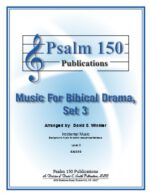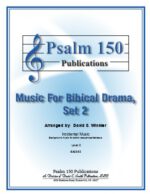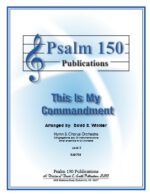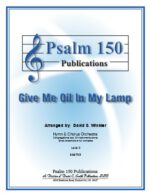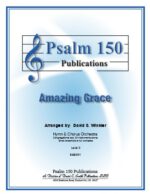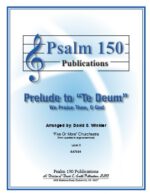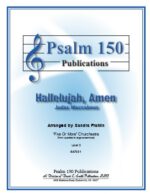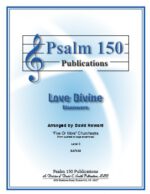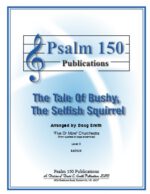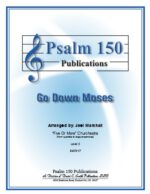-
Music for Biblical Drama, Set 4
$45.00(in manuscript at this time)(Use to accompany your musical dramatic presentation. Each set contains 8-12 pieces which are useful as underscore for action sequences, narrations, tableaus,etc. A variety of instr. combinations and colors…
-
Music for Biblical Drama, Set 3
$45.00(in manuscript at this time)(Use to accompany your musical dramatic presentation. Each set contains 8-12 pieces which are useful as underscore for action sequences, narrations, tableaus,etc. A variety of instr. combinations and colors…
-
Music for Biblical Drama, Set 2
$45.00(in manuscript at this time)(Use to accompany your musical dramatic presentation. Each set contains 8-12 pieces which are useful as underscore for action sequences, narrations, tableaus,etc. A variety of instr. combinations and colors…
-
Music for Biblical Drama, Set 1
$45.00(in manuscript at this time)(Use to accompany your musical dramatic presentation. Each set contains 8-12 pieces which are useful as underscore for action sequences, narrations, tableaus,etc. A variety of instr. combinations and colors…
-
This Is My Commandment
$12.00(in manuscript at this time)(Music to accompany congregational singing. Scored for full orchestra but are playable by smaller groups. May also be performed by instruments alone. Parts included for kybd and/or rhythm) (verse in F)
-
Rejoice Evermore
$12.00(in manuscript at this time)(Music to accompany congregational singing. Scored for full orchestra but are playable by smaller groups. May also be performed by instruments alone. Parts included for kybd and/or rhythm) (I Thess. 5:16-18) (verse in F)
-
In The Name Of Jesus
$12.00(in manuscript at this time)(Music to accompany congregational singing. Scored for full orchestra but are playable by smaller groups. May also be performed by instruments alone. Parts included for kybd and/or rhythm) (verse in F)
-
This Is The Day
$17.50(in manuscript at this time)(Music to accompany congregational singing. Scored for full orchestra but are playable by smaller groups. May also be performed by instruments alone. Parts included for kybd and/or rhythm) (verse in F)
-
Give Me Oil In MY Lamp
$12.00(in manuscript at this time)(Music to accompany congregational singing. Scored for full orchestra but are playable by smaller groups. May also be performed by instruments alone. Parts included for kybd and/or rhythm) (verse in F)
-
Amazing Grace
$20.00(in manuscript at this time)(Music to accompany congregational singing. Scored for full orchestra but are playable by smaller groups. May also be performed by instruments alone. Parts included for kybd and/or rhythm) 4 verses in F,F,G, & Ab
-
Antiphon: Ye Sons and Daughters of the King
$35.00(in manuscript at this time)Arrangements in a flexible format, playable by smaller groups such as brass or woodwind quartet or quintet, with piano, or larger groups, such as concert band or full orchestra. Strings-optional & piano part included.
-
-
Ring Out, Wild Bells
$40.00(in manuscript at this time)Arrangements in a flexible format, playable by smaller groups such as brass or woodwind quartet or quintet, with piano, or larger groups, such as concert band or full orchestra. Strings-optional & piano part included.
-
Hallelujah, Amen
$30.00(in manuscript at this time)Arrangements in a flexible format, playable by smaller groups such as brass or woodwind quartet or quintet, with piano, or larger groups, such as concert band or full orchestra. Strings-optional & piano part included.
-
Love Divine
$30.00(in manuscript at this time)Arrangements in a flexible format, playable by smaller groups such as brass or woodwind quartet or quintet, with piano, or larger groups, such as concert band or full orchestra. Strings-optional & piano part included.
-
On A German Hymn Tune
$30.00(in manuscript at this time)Arrangements in a flexible format, playable by smaller groups such as brass or woodwind quartet or quintet, with piano, or larger groups, such as concert band or full orchestra. Strings-optional & piano part included.
-
Jesus, Lover Of My Soul
$27.50(in manuscript at this time)Arrangements in a flexible format, playable by smaller groups such as brass or woodwind quartet or quintet, with piano, or larger groups, such as concert band or full orchestra. Strings-optional & piano part included.
-
The Tale of Bushy, The Selfish Squirrel
$45.00(in manuscript at this time)Arrangements in a flexible format, playable by smaller groups such as brass or woodwind quartet or quintet, with piano, or larger groups, such as concert band or full orchestra. Strings-optional & piano part included.
-
Go Down Moses
$35.00(in manuscript at this time)Arrangements in a flexible format, playable by smaller groups such as brass or woodwind quartet or quintet, with piano, or larger groups, such as concert band or full orchestra. Strings-optional & piano part included.
-
Jesus, The Very Thought of Thee
$35.00(in manuscript at this time)Arrangements in a flexible format, playable by smaller groups such as brass or woodwind quartet or quintet, with piano, or larger groups, such as concert band or full orchestra. Strings-optional & piano part included.
-
Jubilee: Peter, Go Ring Dem Bells
$7.95(in manuscript at this time)Arrangements in a flexible format, playable by smaller groups such as brass or woodwind quartet or quintet, with piano, or larger groups, such as concert band or full orchestra. Strings-optional & piano part included.
-
Jubilee: Peter, Go Ring Dem Bells
$35.00(in manuscript at this time)Arrangements in a flexible format, playable by smaller groups such as brass or woodwind quartet or quintet, with piano, or larger groups, such as concert band or full orchestra. Strings-optional & piano part included.
-
Chaconne on NEUMARK
$35.00(in manuscript at this time)Arrangements in a flexible format, playable by smaller groups such as brass or woodwind quartet or quintet, with piano, or larger groups, such as concert band or full orchestra. Strings-optional & piano part included.
-
Passacaglia on KIRKEN (in F)
$35.00(in manuscript at this time)Arrangements in a flexible format, playable by smaller groups such as brass or woodwind quartet or quintet, with piano, or larger groups, such as concert band or full orchestra. Strings-optional & piano part included.
-
Forecast The Unclouded Day
$35.00(in manuscript at this time)Arrangements in a flexible format, playable by smaller groups such as brass or woodwind quartet or quintet, with piano, or larger groups, such as concert band or full orchestra. Strings-optional & piano part included.


